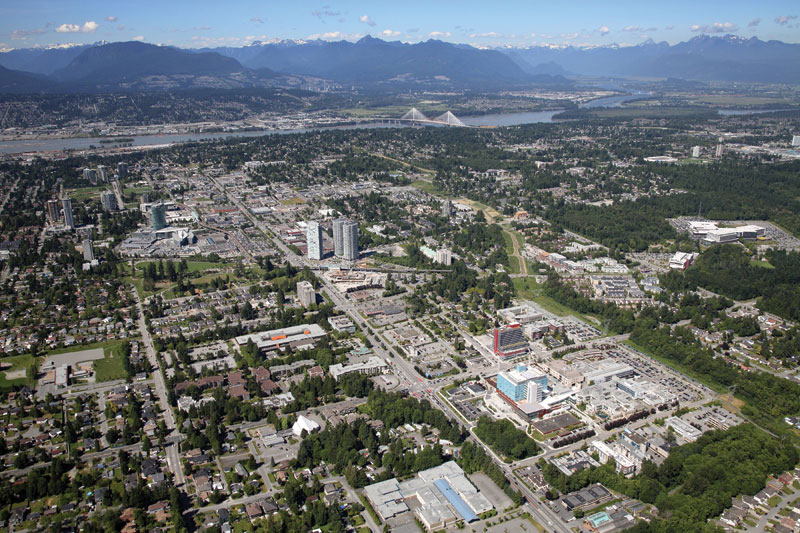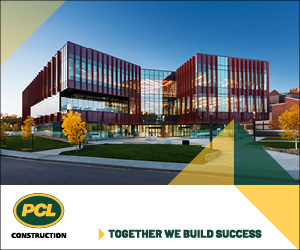Civilization was built one stone at a time. Today, urban infrastructure is the physical and organizational foundation required to operate modern and flourishing societies. The various elements that make up integrated infrastructure include the roads, railways, and waterways that allow our surface- and water-based transportation to move, as well as the development of modern airports to transport goods and people vast distances in short periods of time. Our infrastructure has expanded to include district heating and deep lake water-cooling system, such as Enwave’s Lake Ontario deep water-cooling system in Toronto, and other innovations like Montreal’s underground pneumatic vacuum waste collection system. Combined with energy-from-waste incineration, these vacuum systems in places like Stockholm and Malmo, Sweden have turned garbage into gold.
The modern supply chain would not be possible without the efficient integration of all elements of infrastructure to move people, goods, and services. Add to this the advancements made possible by information technologies and telecommunications (ICT). These advances as part of essential modern infrastructure are now a key element in what is being called “smart infrastructure.”
As urban regions are expected to grow to absorb 70 per cent of the world’s population by 2050, urban regions are already experiencing the impacts of this growth. Along with this growth come urban problems like congestion, pollution, the need to replace aging infrastructure, and the realities of increasingly limited resources to deal with them. Accordingly, municipal governments are seeking ways to do more with less—and are looking to smart infrastructure to help deliver more efficient and environmentally effective services. Through monitoring devices, significant amounts of information are collected, called “big data.” When analyzed, they are able to provide the basis for improved planning, informed budgets, and evidence-based decision-making that is essential for the smart management of road and rail traffic, electric grids, air traffic, and waterways.
With enhanced predictive analytics and visualization made possible with low-cost sensors and innovative software, aging infrastructure like crumbling bridges and gaps in water pipes can be replaced as part of systemic budgeting practices. Similarly, traffic congestion and natural disasters can be better managed, making for improved crisis controls in urban regions. Additionally, pollution can be monitored, and strategic efforts can help to ensure a reduced carbon footprint in every community. As a result, many municipalities are seeing these benefits and adopting an approach to transform themselves into smart cities. Smart-city infrastructure is a new horizon for city planning and development, for municipal asset managers, and for mayors and budget chiefs looking to create more efficiently run communities—but it is only the first step in creating intelligent communities.
This intelligence is a natural evolution for cities that have embraced technology, innovation, and collaborative systems to build their future communities and societies and become better places to live. With smart infrastructure as its physical base, communities can focus their attention toward enhancing their skills, innovation, public policies, and philanthropy, creating a civil society that will flourish. Without it, cities will not be able to evolve into intelligent communities. Accordingly, towns, cities, and regions must first become smart in order to become intelligent communities.
The intelligent-community movement began with the World Trade Centers and World Teleport Associations in the 1970s and ’80s, which linked trading centers around the world through satellites and teleports. In the ’90s, the Internet combined with ICT advances made it possible to begin to transform some of our cities in new and exciting ways. The emergence of smart infrastructure and its associated broadband-based economic benefits in the past two decades has culminated in a global explosion of government-led smart-city projects in places like India, China, and much of the Western world.
The Intelligent Community Forum (ICF) (intelligentcommunity.org) evolved from these key science and trade associations and has led the intelligent-community movement since 1999. This created a global movement—reflected in 134 communities on every continent. As municipal governments around the world are planning for hundreds of new smart cities and regions to emerge, ICF is educating them on expanding and enhancing their planning and development to include these broader goals.
ICF has identified five key criteria that every community must address as they move toward intelligent-community status:
1. Smart City Infrastructure
Broadband is the new essential utility, as vital to economic growth as electricity, clean water, and roads. Intelligent communities express a clear vision of their sustainable broadband future and develop plans and policies to encourage deployment and adoption of these strategies by all elements of its society.
2. Knowledge-based Talent
A knowledge workforce creates economic value through the acquisition, processing, and use of information. Intelligent communities exhibit the determination and demonstrated ability to develop a workforce qualified to perform knowledge work. Universities and other educational institutions have a central role in the planning, development, and implementation of prosperous, knowledge-centric intelligent communities. A key differentiator is the ability to create, attract, and retain this talent.
3. Innovation and Creativity
This is key in developing a prosperous society where continuously new and efficiently produced products and services can be created for commercial gain. Communities that collaborate and provide the support to build an innovation ecosystem to be able to create, attract, and retain the talent and are able to generate the domestic and foreign investment necessary for them to thrive are among the most successful intelligent communities.
4. Digital Inclusion
Participation by all citizens is vital in intelligent communities. Accordingly, policies and funding programs that provide have-not members in the community with affordable access to digital broadband technologies is important. Through self-improvement and employment, these citizens can improve their lives, their health, and their self-esteem. It also creates a community that is safer and more self-reliant. Talent and investment are attracted to such caring and healthy communities.
5. Marketing and Advocacy
Like businesses facing greater global competition, communities must work harder than ever to communicate their advantages and explain how they are maintaining or improving their position as wonderful places to live, work, and build a business. Effective marketing shares their story with the world while advocacy and public policies build a new vision of the community from within.
There are currently 134 intelligent communities around the world that have met ICF’s criteria, and 22 are in Canada alone. Canadian intelligent communities have acted as models for many years from small- and medium-sized municipalities like Stratford, Ontario; Surrey, British Columbia; and Waterloo, Ontario to larger centres like Vancouver, Montreal, and Toronto. Many of these communities tend to be early adopters of technology, enabling various aspects of their industry sectors to thrive. What were early trends, such as the development of gigabit broadband environments in Waterfront Toronto, are now being adopted in other cities.
As older business and industry activities are replaced by new disruptive technologies, intelligent communities like Waterloo have been able to weather the storm of a major industry downturn. Today, the community’s newest innovations focus on robotics, wearables, and even quantum computing and nanotechnology applications. Montreal’s Smart and Digital City strategy facilitates the bottom-up emergence of individual initiatives and supports multi-stakeholder acceleration of these initiatives. Stratford is a growing beta-testing community with its many “living lab” projects, among them LeoNovus, an Internet-video platform start-up based in Silicon Valley and Ottawa, which is testing its accelerated Internet and video platform in more than 50 Stratford homes and will consolidate idle CPU power as a massively distributed computing cloud. Waterfront Toronto boasts the highest-performance Internet services in Canada, providing subscribers in its new waterfront communities with 500-megabit-per-second symmetrical Internet connections at affordable rates.
ICF has been in the forefront to identify and share best practices of these communities with others around the world. Since 1999, these intelligent communities have been showcased through a unique awards program that culminates in an annual summit in New York City where the Intelligent Community of the Year is announced. In 2014, that title went to Toronto. In addition to mayors, chief administrative officers, chief information officers, and planning and economic development officers, the summit is also an international gathering of university and private sector business executives. In celebration of the 20th anniversary of the world’s first smart-city conference held in Toronto in 1995, the 2015 summit will again take place in Toronto from June 8 to 12 and will include a visit to the Region of Waterloo, 2007’s Intelligent Community of the Year.
John Jung is chairman and co-founder of the New York-based Intelligent Community Forum.

















